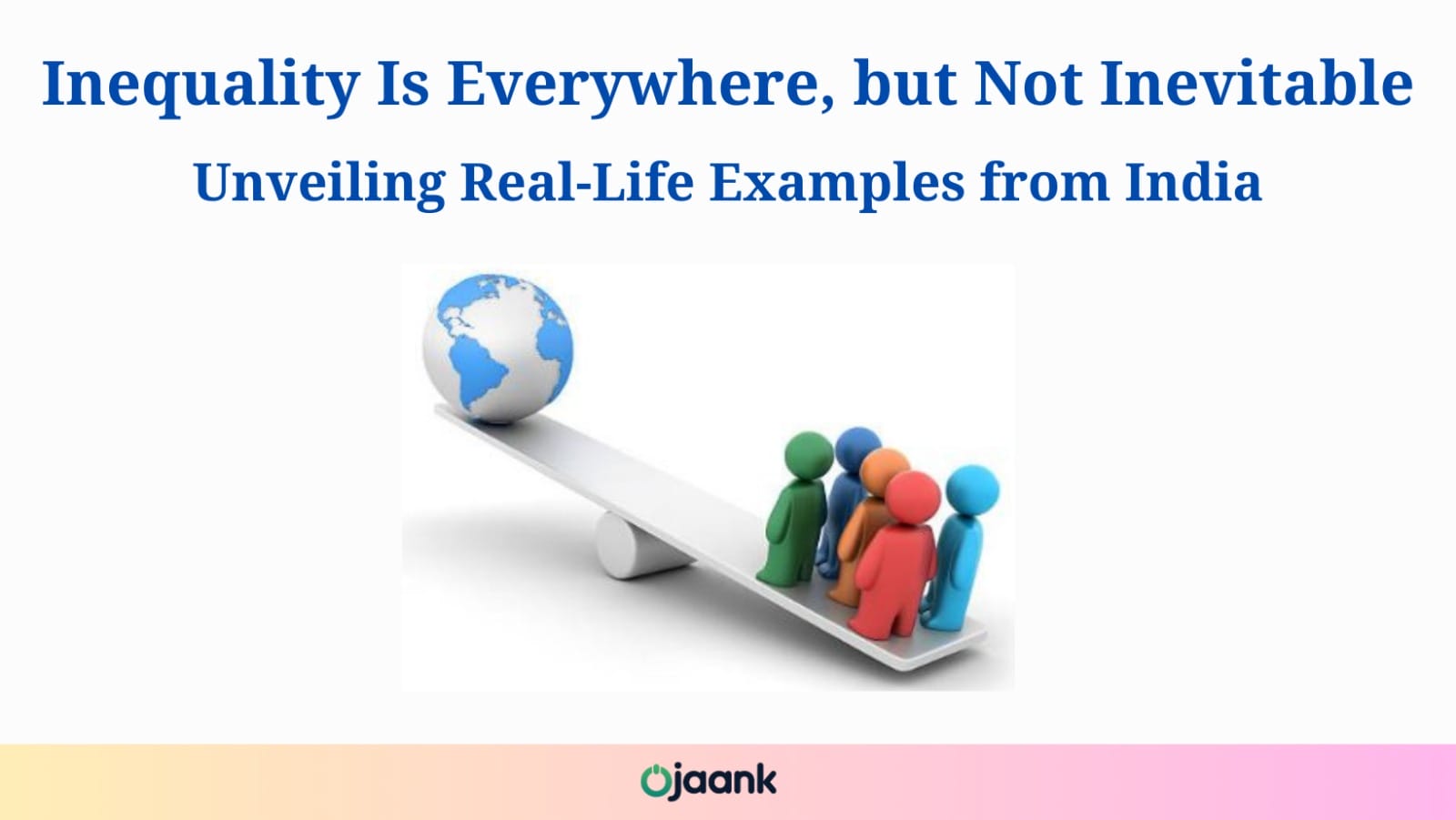Inequality Is Everywhere, but Not Inevitable: Unveiling Real-Life Examples from India

Inequality, a stark and ubiquitous feature of modern societies, casts its long shadow across nations, affecting the lives of millions. While it may seem pervasive, the assertion that inequality is inevitable demands careful scrutiny. As India, a country marked by its diversity and complexity, stands at the crossroads of progress, it provides a compelling canvas to examine the interplay between socio-economic disparities and the potential for change. Real-life examples from India underscore that while inequality exists, it is not an inescapable fate, as determined efforts can unravel its roots and pave the way for a more equitable future.
In the heart of India's bustling urban centers, digital technology thrives, promising a world of opportunities and connectivity. However, lurking in the shadows are rural areas where access to even basic digital amenities remains a distant dream. The digital divide highlights a clear inequality, where individuals from urban backgrounds are poised to harness the power of information and communication, while their rural counterparts face barriers to education, employment, and advancement. Initiatives like the "Digital India" campaign aim to bridge this divide, illustrating that with targeted policies and investments, inequality can be confronted and minimized.
Education, often hailed as the great equalizer, paradoxically reveals some of the deepest chasms of inequality in India. Rural-urban discrepancies in educational infrastructure, resources, and opportunities perpetuate a cycle of unequal access to knowledge. However, success stories like that of Malala Yousafzai, the Pakistani activist advocating for girls' education, find resonance in India as well. Initiatives such as the "Midday Meal Scheme," which provides free meals to schoolchildren, encourage attendance and participation, breaking down socio-economic barriers to education. These endeavors emphasize that inequality, while present, is not a predetermined outcome but rather a challenge that can be addressed.
Gender inequality, an issue transcending borders, is particularly pronounced in India. Deep-rooted socio-cultural norms have perpetuated disparities in wages, representation, and opportunities. However, winds of change are evident in the inspiring story of Kalpana Chawla, the first woman of Indian origin in space. Her journey from a small town to the stars illustrates the potential for breaking free from traditional gender roles. Grassroots movements, such as the "Beti Bachao, Beti Padhao" campaign, emphasize the importance of empowering girls through education and advocating for their rights. These efforts illuminate the malleability of inequality, even in domains where its grip seems unyielding.
Healthcare access in India presents a stark contrast between the affluent and the marginalized. Urban elites can afford world-class medical treatment, while rural populations often lack even basic healthcare services. The case of Arunachalam Muruganantham, who invented low-cost sanitary napkins, demonstrates how innovative thinking can tackle health-related disparities. His invention not only addressed menstrual hygiene but also generated employment opportunities for women in rural areas. This example reinforces the idea that while inequality may be deeply entrenched, inventive solutions can reshape the landscape of healthcare access.
Economic inequality, epitomized by the divide between the rich and the poor, is a pervasive issue in India. The opulence of Mumbai's skyscrapers juxtaposed with the slums underscores this disparity. Nonetheless, initiatives like the Self Employed Women's Association (SEWA), founded by Ela Bhatt, have championed the cause of empowering women in the informal sector. SEWA's success in fostering financial independence showcases that economic inequality is not an immutable feature but can be dismantled through community-driven efforts.
India's history is intertwined with a complex caste system that has perpetuated social hierarchies and discrimination. Although challenges persist, the story of Dr. B.R. Ambedkar stands as a testament to the potential for change. Born into a Dalit family, he overcame caste-based barriers to become a prominent jurist and the architect of India's Constitution. His life's work laid the foundation for affirmative action policies, aiming to uplift marginalized communities. This trajectory reinforces the belief that inequality, while deeply embedded, is not an insurmountable obstacle to social justice.
Inequality may indeed be prevalent, but it is far from inevitable. India's tapestry of real-life examples paints a mosaic of hope, demonstrating that concerted efforts can challenge and overcome disparities. Initiatives aimed at digital inclusion, education enhancement, gender empowerment, healthcare access, economic upliftment, and social justice showcase that while inequality may be deeply rooted, it is not impervious to change. These stories underscore the transformative power of policies, grassroots movements, and individual determination in shaping a more equitable future.
As India continues to navigate the complexities of its socio-economic landscape, these examples serve as beacons of possibility. They remind us that while inequality may persist, it is our collective responsibility to dismantle the structures that perpetuate it. By drawing inspiration from these narratives, societies around the world can embark on a journey towards a future where equality and opportunity are not distant dreams, but living realities.